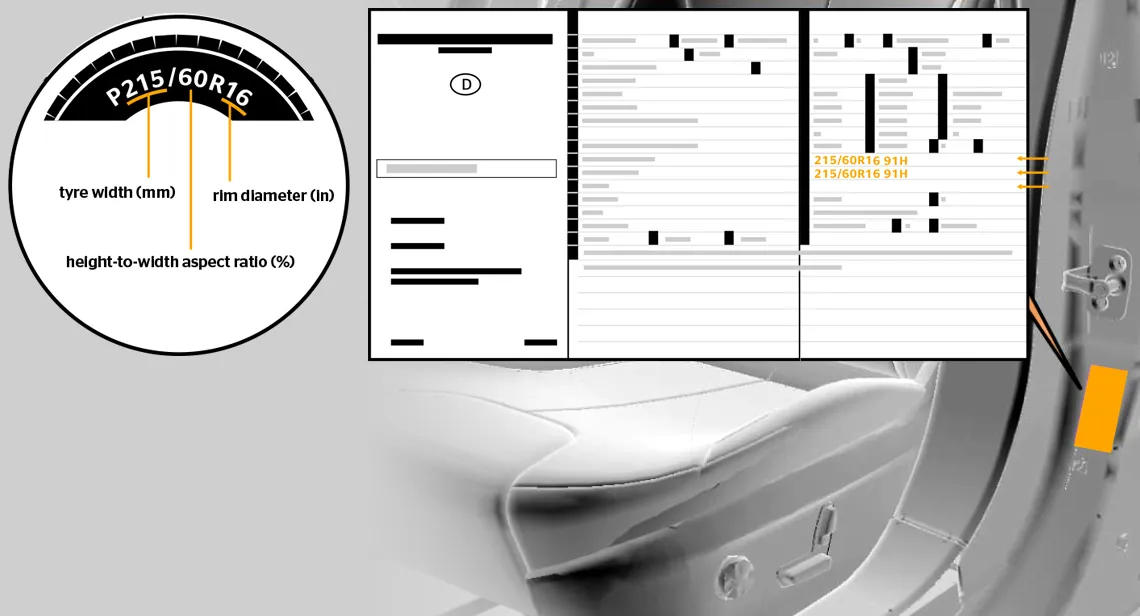.png)
Autonomous driving, also known as self-driving or driverless technology, is set to revolutionize transportation as we know it. With its potential to enhance safety, reduce congestion, and increase accessibility, autonomous driving has garnered significant attention worldwide. In this blog post, we will explore the impact of autonomous driving on the tire industry and how it is shaping the future of mobility. We will delve into the initiatives taken by the UAE government, collaborations driving innovation, and the tire industry's response to this transformative technology along with how to find the best tires in the UAE for such a driving shift.
.png)
The UAE's Vision for Autonomous Driving
The UAE government has been at the forefront of embracing autonomous driving. With a vision to transform 25% of transportation in Dubai to autonomous mode by 2030, the UAE is making substantial investments and providing necessary infrastructure to support autonomous driving initiatives. Key projects include autonomous taxi services and autonomous bus trials, which aim to improve transportation efficiency and reduce carbon emissions.
Collaborations Driving Innovation
The success of autonomous driving relies on collaborations between various stakeholders. Technology companies, automakers, and tire manufacturers are coming together to push the boundaries of innovation. Through public demonstrations and educational campaigns, they are raising awareness and gathering valuable feedback from the public. Notable experiments and trials have already taken place, such as Tesla's in-vehicle trial in 2018 and the Road and Transport Authority's (RTA) autonomous bus trials in Dubai.
These collaborations not only showcase the capabilities of autonomous vehicles but also drive technological advancements in the tire industry. By working together, companies can overcome challenges and accelerate the development of safer and more efficient tires for autonomous vehicles.
.png)
The Tire Industry's Response: Autonomous driving presents unique challenges for the tire industry. As autonomous vehicles operate without human intervention, tires need to be specifically designed to meet the demands of this technology. Tire manufacturers are investing heavily in research and development to create specialized tires that can deliver optimal performance in various autonomous driving scenarios.
Additionally, tire sensors and data analytics play a crucial role in enhancing the safety and performance of autonomous vehicles. These sensors provide real-time information about tire pressure, temperature, and tread wear, allowing for proactive maintenance and optimal vehicle control. Tire manufacturers are harnessing this data to develop smart tire solutions that can optimize fuel efficiency, reduce emissions, and improve overall safety.
Implications for the Future of Mobility
Autonomous driving has far-reaching implications for the future of mobility. One of the primary benefits is improved safety. With autonomous vehicles equipped with advanced sensors and sophisticated algorithms, the potential for human error is significantly reduced. This has the potential to significantly reduce the number of accidents and fatalities on the roads.
The potential of autonomous driving lies in its ability to alleviate traffic congestion. By optimizing routes, minimizing idle time, and facilitating smoother traffic flow, autonomous vehicles can help alleviate traffic jams in urban areas. This, in turn, can lead to reduced travel times and improved overall efficiency in transportation systems.

In addition to the advantages, there are also obstacles that need to be tackled. The introduction of autonomous driving technology can potentially result in unemployment for professional drivers. It is essential to take into account initiatives for retraining and acquiring new skills to facilitate a seamless shift for those affected. Privacy issues are another significant factor that requires consideration. With autonomous vehicles relying on extensive data collection and analysis, protecting the privacy and security of user information becomes paramount. Striking a balance between data utilization and privacy protection will be crucial for fostering public trust in autonomous driving technology.
Expanding beyond individual transportation, autonomous driving holds the capacity to transform delivery services and public transportation. Autonomous vehicles can be utilized for efficient last-mile delivery, reducing logistics costs and enhancing convenience. In the realm of public transportation, autonomous buses and shuttles can improve accessibility and provide flexible transportation options for communities.
Conclusion
Autonomous driving is set to transform the tire industry and shape the future of mobility. The UAE's commitment to autonomous transportation, collaborations driving innovation, and the tire industry's response are all crucial factors in realizing the potential of autonomous driving. As we move forward, it is essential to address challenges and seize opportunities to create a future where autonomous driving and the tire industry work hand in hand to provide safer, more efficient, and sustainable transportation for all.







